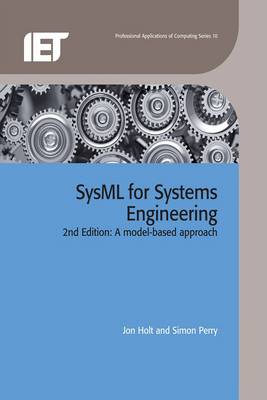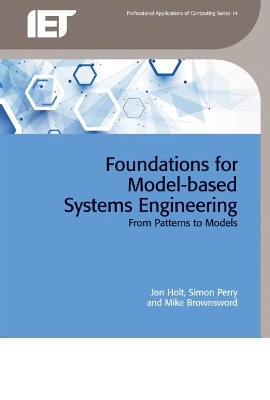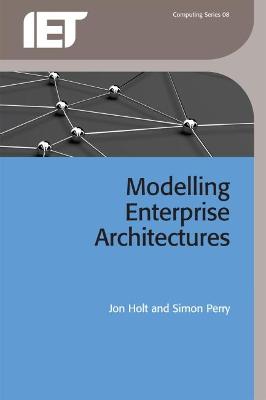Computing and Networks
5 total works
This new edition of this popular text has been fully updated to reflect SysML 1.3, the latest version of the standard, and the discussion has been extended to show the power of SysML as a tool for systems engineering in an MBSE context. Beginning with a thorough introduction to the concepts behind MBSE, and the theoretical aspects and syntax of SysML, the book then describes how to implement SysML and MBSE in an organisation, and how to model real projects effectively and efficiently, illustrated using an extensive case study.
Foundations for Model-based Systems Engineering
by Jon Holt, Simon Perry, and Mike Brownsword
The practice of Model-based Systems Engineering is becoming more widely adopted in industry, academia and commerce and, as the use of modelling matures in the real world, so the need for more guidance on how to model effectively and efficiently becomes more prominent. This book describes a number of systems-level 'patterns' (pre-defined, reusable sets of views) that may be applied using the systems modelling language SysML for the development of any number of different applications and as the foundations for a system model.
Topics covered include: what is a pattern? Interface definition pattern; traceability pattern; test pattern; epoch pattern; life cycle pattern; evidence pattern; description pattern; context pattern; analysis pattern; model maturity pattern; requirements modelling; expanded requirements modelling; process modelling; competence modelling; life cycle modelling; defining patterns; and using patterns for model assessment, model definition and for model retro-fitting.
This book forms a companion volume to both SysML for Systems Engineering - a model-based approach and Model-based Requirements Engineering, both published by the IET. Whereas the previous volumes presented the case for modelling and provided an in-depth overview of SysML, this book focusses on a set of 'patterns' as the basis of an MBSE model and their use in today's systems engineering community.
Up until a few years ago there were many different modelling languages available to software developers. However, this vast array of choice only served to hinder communication and as a result the Unified Modelling Language (UML) was born. Although the UML has its roots firmly in the software world, the benefits of adopting a standard visual notation have been recognised in many other fields, not least of which is the field of systems engineering. This book concentrates on systems-based applications, rather than the traditional software applications that are more usually associated with the UML. Now fully updated to reflect the changes to UML for its version 2.0 release, this new edition has been substantially re-written and includes new material on systems architectures and life cycle management.
For any organisation to be successful in an increasingly competitive and global working environment, it is essential that there is a clear understanding of all aspects of the business. Given that no two organisations are exactly alike, there is no definitive understanding of exactly what these aspects are as they will depend on the organisation's nature, size and so on. Some of the aspects of the business that must be considered include: process models, process descriptions, competencies, standards, methodologies, infrastructure, people and business goals.
It is important that these different aspects of the business are not only understood, but also that they are consistent and congruent with one another. The creation of an effective Enterprise Architecture (EA) provides a means by which an organisation can obtain such an understanding.
This book looks at the practical needs of creating and maintaining an effective EA within a twenty-first-century business through the use of pragmatic modelling. The book introduces the concepts behind enterprise architectures, teaches the modelling notation needed to effectively realise an enterprise architecture and explores the concepts more fully through a real-life enterprise architecture.
Model-Based Requirements Engineering
by Jon Holt, Simon A. Perry, and Mike Brownsword
This book provides a hands-on introduction to model-based requirements engineering and management by describing a set of views that form the basis for the approach. These views take into account each individual requirement in terms of its description, but then also provide each requirement with meaning by putting it into the correct 'context'. A requirement that has been put into a context is known as a 'use case' and may be based upon either stakeholders or levels of hierarchy in a system. Each use case must then be analysed and validated by defining a combination of scenarios and formal mathematical and logic-based proofs that provide the rigour required for safety-critical and mission-critical systems.
The book also looks at the crucial question of modelling notations for requirements modelling and includes discussions on the use and application of SysML, text and tabular formats.
Pragmatic issues, such as tailoring the approach for short, non-critical projects to massive, mission-critical projects is discussed to show how the techniques introduced in the book can be applied on real-life projects and systems. The use of multiple tools will also be discussed, along with examples of how an effective process can lead to realisation by any tool.




